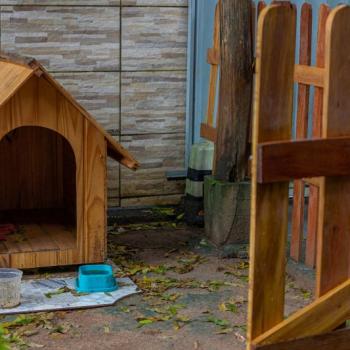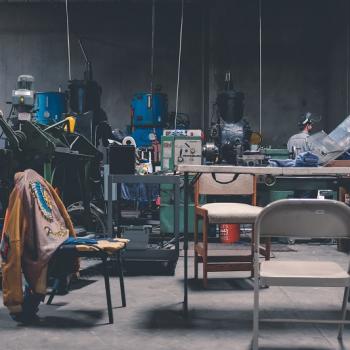
Struggling congregations tend to chase after popular strategies rather than do what Jesus commanded — make disciples, says the United Methodist pastor of a replanted church in Dallas. This article is reprinted from Faith and Leadership.
Shortly after graduating from seminary, Andrew Forrest received an invitation to replant a struggling church in East Dallas.
Munger Place Methodist Church, founded in 1913, had for many years played an influential role in the city, maintaining a membership of more than 2,000 from the 1930s through the 1960s. But in the early ’70s, with the court-ordered desegregation of the Dallas Independent School District, its families began to leave the East Dallas area. The congregation and nearby community suffered as more and more people moved away.
When the congregation’s financial plight worsened after the 2008 recession, the church could not afford to maintain its once-ornate facilities. In 2009, Munger Place prepared to close its doors.
Meanwhile, a nearby thriving congregation, Highland Park United Methodist, had plans to plant a second campus in East Dallas. When Highland Park heard about Munger’s distress, leaders began conversations about assuming responsibility for the congregation on the brink of closure. Rather than starting a new church, they began to consider whether they should replant an existing one.
Highland Park committed to raise the money to renovate Munger Place, and the North Texas Annual Conference agreed to allow Munger to become a campus of Highland Park.
 Then they called Forrest.
Then they called Forrest.Aware that the church’s context included a complex configuration of histories, missions and constituencies — for not one but two communities — Forrest understood that Munger presented a challenge with few models.
Yet he accepted the invitation and narrated a vision to breathe new life into the dead and dying.
“Folks in our neighborhood have a strong preservationist tendency,” Forrest said. “We kept the best parts of the old when we renovated Munger, but updated it. In some ways, our worship style matches our building, drawing on the resources of the tradition, but making ancient Christian practices accessible to 21st-century Americans.”
Now, six years later, new life seems to be springing up all around Munger and East Dallas.
Forrest was recently interviewed by Dustin Benac, a Th.D. student at Duke Divinity School. The following is an edited transcript.
Q: How did you end up at Munger?
I met Paul Rasmussen, who was at that time one of the ministers at Highland Park (he’s now the senior minister), at a luncheon. And Paul said, “Why don’t you come by my office and talk to me sometime?”
I did that a couple of times, and then he shared about the idea to replant Munger. At first, I wasn’t really interested, because I wasn’t sure if my wife and I were going to stay in Texas.
But then the more I thought about it, the more I thought, “That’s pretty cool.” I liked the idea of planting a new church in an urban area. Also, my wife and I were already living in East Dallas, right in the Munger neighborhood.
Ultimately, I threw my hat in the ring. I am so grateful that Paul reached out to me — I can’t imagine where I would be apart from his gracious invitation.
Q: How did the vision to replant Munger acknowledge Munger’s particular history? How did you pursue this vision during the early days of your community?
We did not spend much time worrying about Munger’s specific history as a church; rather, we were much more concerned with the history and culture of our neighborhood. What helped is that I was already living in our neighborhood at the time, and had been for the previous three years.
We tried to avoid anything that would seem like the big-box retailer was coming in and taking over the beloved mom and pop establishment.
So we kept asking, “Will this work for East Dallas?” And I think that question helped us connect with our neighborhood. We also had a presence at as many neighborhood functions and festivals as possible, which also helped us get a feel for our neighborhood.
Q: I’ve heard you describe Munger’s vision as “combining the best of the old with the best of the new.” How has this vision been expressed in terms of the facility and the discipleship practices of your community?
For one thing, our building is an older building, at least old for Dallas, and the houses around here are old. But nobody wants to live in a 1915-era house without updating it. People buy houses and then like to update the bathroom fixtures and the kitchen and so on.
As for our physical space, we have video and high-tech equipment, but we also have pews and stained-glass windows. Munger looks like a church.
As far as discipleship practices, in a world in which there is almost no historical memory at all — which is the modern American world — when you begin to pull out resources from the tradition, they often strike people as surprising and new.
We’re not doing anything new, but we are trying to pull out the best of the old. And when I do so, I always try to explain it and make it accessible. A lot of times, a little simple word that explains why this practice is valuable or what the thinking is behind it is all that is required.
Ash Wednesday, which is a tradition with hundreds of years of history behind it, is an example of something old that we’ve reclaimed. Ash Wednesday is somber and bracing, but it is also a clear-eyed look at the truth about who we are as humans: “You’re a sinner, and you’re going to die.” This year, 667 people attended our Ash Wednesday services.
People who talk about the “nones” and the unchurched often tell church leaders like me that we need to make our message more palatable and avoid unpopular topics like sin and death. I think this is exactly the wrong advice.
Neither by background nor by training nor by inclination am I a fire-and-brimstone preacher. And yet the gospel itself makes no sense if it’s just vague feel-goodery. The gospel, as I understand it, is the good news regarding the life, death and resurrection of Jesus Christ.
Forty-five percent of the Munger members did not have a prior church affiliation, and almost 700 people attended Ash Wednesday services this year at Munger! What those statistics tell me is that the choice facing the church in an increasingly secular, Western, 21st-century context is either to move away from orthodoxy and therefore toward irrelevance and death or to deliberately move toward orthodoxy and therefore toward Spirit-given vibrancy.
Ours is a culture that has been deracinated — uprooted — and in which people are told that life is all about getting and spending. No wonder folks seem to be hungry for the deep roots of the gospel and the church.
We’re just trying to do things that Christians have been doing for 2,000 years and remind people that the church has been around for 2,000 years — that it’s not an ahistorical faith.












